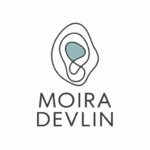What is Creative Growth?
Creative imagination is more than just an active imagination. To imagine things, to see and hear things in your mind, is an important ability.
For example, daydreaming is a process of imagination. It can comprise an elaborate fantasy world, where your mind wanders and your attention shifts from the task at hand to a place that is entirely your own. A secret place where you can explore anything.
Creative imagination has to include the ability not just to imagine things, but to imagine original things.
It is seeing things that others don’t see and coming up with new ideas.
So how do you cultivate this?
First, exercise your basic imagination. It can be as simple as thinking in pictures more, or listening to music in your mind. Play little ‘movies’ in your mind until you can watch them on command.
This is a simple process, but for those of us that cannot do it easily, it can take a lot of practice. But it is not an unpleasant activity!
The second part of developing your creative imagination is to get more creative in your thinking and imagining. Start by paying attention to your unconscious mind. Your unconscious mind occurs outside of your awareness or control. It spends its time gathering and absorbing the information around you and your life experiences.
Our unconscious minds will always give us more of what we pay attention to. So if you focus on creativity, then your unconscious mind will feed you more creative ideas.
Play games which exercise your creative imagination. One such game uses a technique called “concept combination.” 1 Alone or with other players, you combine random concepts or things in new ways, to decide upon the best idea.
For example, a thermometer and a billboard could generate an idea for a sign that checks the weather and adjusts the message “Come in out of the heat for a cold beverage,” or “Come in out of the rain and warm up with our gourmet coffee.”
By combining concepts it means you can use a finite number of concepts to create a limitless quantity of new ideas.
If you want to find creative inspiration start redesigning everything you see. Imagine a better bicycle, a faster mail service, or a better chair. Continue this for four weeks, and it will become a habit. Of course, creative imagination goes beyond solving specific problems or inventing things.
True creative minds are always coming up with the questions too, not just the solutions.
Moving viewpoints
If you want to develop your creative imagination, change your perspective. A child might think that working just not to work (to retire) is silly.
Thinking from that perspective might give you ideas for how to make money doing things you enjoy. Seeing the world as a child sees it might give you imaginative new ideas.
Looking at things from a customer’s perspective is a sure way to find creative improvements for a business. Work on seeing everything from several different perspectives.
Power of assumptions
Challenge your assumptions. What if restaurants did not have employees? What if restaurants were managed by robots instead. So one owner-operator could run a large restaurant alone. Challenge your assumptions across a wide variety of subjects.
For example, Do swimming pools need water? Can exercise be a bad thing? Let your ideas run wild. Does a flying bed seem silly? It could lead to the concept of a helium mattress. When you get up in the morning, it floats out of the way, up to the ceiling. Do not stifle your creativity.
Relax and let ideas come. You can always discard them later.
For these techniques to be a habitual part of your thinking, use them regularly. Since it takes at least 6 weeks to develop a habit, remind yourself to use them each day.
Collect your favourite techniques. Your creative flow should be never ending.
References:
1 Fodor, Jerry A.; Pylyshyn, Zenon W. (1988). “Connectionism and cognitive architecture: A critical analysis”. Cognition. 28 (1–2): 3–71
© 2022 Lifexpression Limited All Rights Reserved
© 2022 Shutterstock.com. © 2022 Envato Pty Limited


